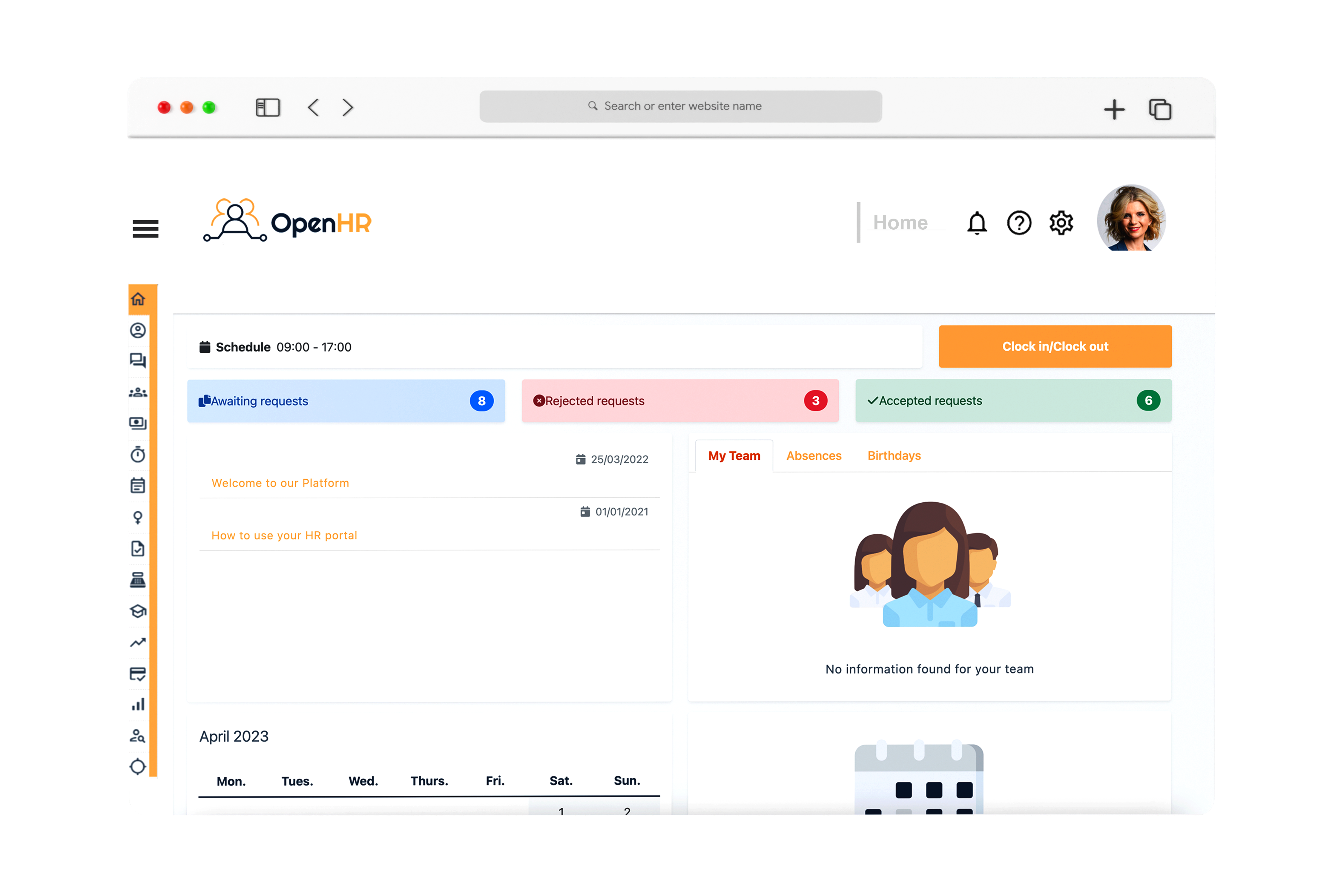At OpenHR we know that the implementation of an HR software means at the same time, a considerable change in the technology and culture of the company, it requires the adoption of new habits in the daily or monthly activities of each employee, therefore we thought it was important to share the best attitudes to take into account to manage the change and the benefits that it will bring to the company.
Implementing change management for HR software deployment involves several important steps and considerations.
Steps and tips to follow based on our years of experience implementing HR software.
- Communicate the reason why: Clearly articulate the vision and objectives of implementing the new HR software. This vision should align with the organization's overall goals and strategy. Communicate the benefits of the software to employees, emphasizing how it will improve their work and the organization as a whole.
- Assign the project to a specific team: Form a dedicated change management team consisting of representatives from HR, IT, and other relevant departments. This team will be responsible for planning, coordinating, and executing the change management activities throughout the implementation process.
- Make sure the team is ready for change: Conduct a thorough assessment of the organization's readiness for change and the potential impact of the HR software implementation. Identify stakeholders, understand their concerns, and assess the level of change required for each group. This assessment will help tailor change management strategies accordingly.
- Create a Change Management Plan: Based on the assessment, create a comprehensive change management plan that outlines the specific activities, timelines, and resources needed for each phase of the implementation. The plan should include strategies for communication, training, stakeholder engagement, and addressing resistance to change.
- Keep everyone up to date: Develop a communication strategy that keeps employees informed and engaged throughout the implementation process. Communicate the reasons for the change, the timeline, and the benefits of the new HR software. Use various channels such as meetings, emails, intranet, and presentations to reach different employee groups and ensure consistent messaging.
- Provide Training and Support: Offer comprehensive training to employees on how to use the new HR software effectively. Tailor the training programs to different user groups based on their roles and responsibilities. Provide ongoing support during and after the implementation, including resources such as user manuals, FAQs, and helpdesk assistance.
- Involve Employees and Encourage Feedback: Involve employees in the decision-making process where feasible. Seek their input, listen to their concerns, and address them appropriately. Encourage feedback on the usability of the software, potential issues, and suggestions for improvement. This involvement fosters a sense of ownership and increases buy-in.
- Address Resistance: Anticipate and address resistance to change proactively. Identify potential sources of resistance and develop strategies to mitigate them. Provide ample opportunities for employees to express their concerns and address them with transparency. Offer support and reassurance throughout the transition, emphasizing the benefits and long-term value of the new HR software.
- Monitor and Evaluate Progress: Regularly monitor the progress of the HR software implementation and the effectiveness of the change management strategies. Collect feedback from employees, track user adoption rates, and measure key performance indicators. Use this information to make necessary adjustments to the change management approach and ensure successful implementation.
- Celebrate Success and Sustain Change: Once the HR software implementation is complete, celebrate the success and acknowledge the efforts of the employees involved. Reinforce the benefits of the new system and continue to provide support and training as needed. Monitor the sustained adoption of the software and address any post-implementation challenges promptly.
Change management plays a crucial role in the successful implementation of HR software within an organization. Once the change management plan is successfully completed, the results will be evident and positive, however, we would like to mention some of the most important benefits you will perceive in your organisation.
Benefits of incorporating a change management plan in HR software implementation:
- Soft Transition: Change management helps ensure a smooth transition from the existing HR processes to the new software. It focuses on preparing employees for the change, addressing their concerns, and providing the necessary training and support to adapt to the new system effectively. This reduces resistance and promotes a seamless implementation.
- Workforce Engagement: Change management emphasizes engaging employees throughout the implementation process. It involves communicating the benefits of the new HR software, involving employees in decision-making, and seeking their feedback. This involvement fosters a sense of ownership and increases employee buy-in, leading to higher engagement levels.
- Improved User Adoption: Effective change management strategies enhance user adoption of the new HR software. By addressing user needs, providing training, and offering ongoing support, employees become more comfortable with the new system. This reduces the learning curve, increases user satisfaction, and encourages widespread adoption across the organization.
- Improved Efficiency and Productivity: HR software is designed to streamline HR processes, automate tasks, and improve overall efficiency. Change management ensures that employees understand the new system's capabilities and how it can enhance their work. By effectively implementing the software and optimizing workflows, organizations can experience increased productivity and reduced manual effort.
- Data Accuracy and Reporting: HR software implementation often involves data migration and consolidation from various sources. Change management focuses on data integrity and accuracy during the transition. This includes data cleansing, validation, and ensuring that reporting capabilities meet organizational requirements. Accurate data and robust reporting features enable HR professionals to make informed decisions and provide valuable insights to stakeholders.
- Compliance and Governance: HR software implementations often come with regulatory and compliance considerations. Change management ensures that the new system aligns with legal requirements, internal policies, and industry standards. It helps organizations implement necessary controls, security measures, and data privacy practices, reducing the risk of non-compliance and ensuring proper governance.
- Scalability and future-proofing: Change management takes a holistic approach, considering not only the current needs but also the organization's future requirements. It helps identify scalability options, integration possibilities, and aligning the HR software with long-term strategic goals. By planning for the future, organizations can adapt to evolving HR practices and technologies more effectively.
- Reduced Costs and Time: Change management mitigates the risks of project delays, scope creep, and budget overruns. By carefully planning the implementation, addressing employee concerns proactively, and ensuring smooth adoption, organizations can minimize disruption and associated costs. A well-executed change management approach helps save time, resources, and minimizes the negative impact on daily HR operations.
We hope we have helped you identify best practices and recognize the benefits of good change management in your organisation.


